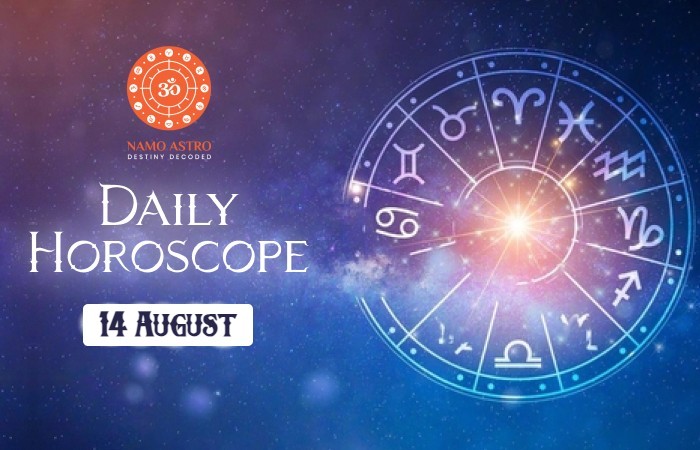Mokshada Ekadashi: Significance and Vrat Vidhi!

Ekadashi is extremely significant in Hinduism. It is a period for us to do some soul cleansing and reflection and get in harmony with this Brahmand. One such important Ekadashi Vrat is Mokshada Ekadashi.
Mokshada Ekadashi, observed on the 11th day of the bright fortnight in the month of Margasheersha, is also celebrated as ‘Gita Jayanti.’ In regions like Orissa and South India, it is known as Baikuntha Ekadashi. This special day is also dedicated to worshipping the holy scripture, ‘The Bhagavad Gita.’ Let us tell you more about this.
Also Read: Ekadashi: A list of all Ekadashi Vrat dates and Timings in 2023
Significance of Mokshada Ekadashi
Let us tell you what makes Mokshada Ekadashi so special:
-
If there’s Pitru dosha in your birth chart, if you’re having dreams about ancestors, facing issues due to them, or feeling the effects of the evil eye, it’s beneficial to observe a fast and offer prayers on the auspicious day of Mokshda Ekadashi.
-
The belief is that this ritual brings peace and salvation to ancestors, and individuals receive blessings for a successful life. Performing Vishnu puja on this day cleanses one of the sins. To know how to perform the puja, you can speak to pundits at NamoAstro.
-
Additionally, Mokshda Ekadashi is celebrated as Geeta Jayanti, as it is believed that on this day, Bhagwan Shri Krishna gave the Gyan of Shrimad Bhagavat Katha to Kuntiputra Arjun.
Mokshada Ekadashi Vrat Katha
King Vaikhaanasa, a kind ruler of Champaka-Nagar, was disturbed when he dreamed of his father undergoing severe treatment in hell, ruled by Yamaraja. Desperate to relieve his father from such suffering, the king sought advice from the Brahmins in his kingdom. To consult the omniscient sage Parvata Muni, the king undertook a journey to seek guidance.
Parvata Muni, a sage with knowledge of the past, present, and future, revealed the cause of the father’s agony. In a previous life, the king’s father had committed a heinous act by forcefully engaging in relations with his wife during her menstrual cycle, leading to his current torture in hell. To free his father, Parvata Muni prescribed a solution – observing a full fast on the Ekadashi in the Shukla Paksha of the Margashirsha month.
Following the sage’s instructions, King Vaikhaanasa and his family observed the Ekadashi fast diligently. As the merits of their observance were offered to the suffering father, flowers showered upon the king, and messengers of the gods praised the departed soul. The father was escorted to heaven, blessing his son, the king, with a prosperous life. The elevated soul reached its ultimate destination, serving the Divine Bhagwan Vishnu.
Bhagwan Krishna, narrating this tale to Yudhishtira, emphasised the purity of Mokshada Ekadashi. He explained that faithfully observing this Ekadashi could lead to liberation even after death and facilitate the spiritual path towards ‘Moksha’.
Gita Jayanti is celebrated because, on this day, Bhagwan Krishna shared important teachings with Arjuna in the Bhagavad Gita. Arjuna was hesitant about fighting in the battle against the Kauravas, who were his cousins. Seeking guidance, he asked Bhagwan Krishna, his charioteer in the Kurukshetra war, to place the chariot between the opposing armies just before the Kurukshetra war began.
सेनयोरुभयोर्मध्ये रथं स्थापय मेऽच्युत ||
यावदेतान्निरीक्षेऽहं योद्धुकामानवस्थितान् |
कैर्मया सह योद्धव्यमस्मिन् रणसमुद्यमे ||
“O Achyuta, position my chariot between the two armies so I can see those ready for battle.”
Arjuna, witnessing his relatives and friends on the opposing sides, felt overwhelmed by grief and despair. Unwilling to participate in a war that would cause the deaths of loved ones, he turned to Bhagwan Krishna for guidance. On Margasheersha Shukla Ekadashi, Bhagwan Krishna delivered 700 verses, forming ‘The Bhagavad Gita.’ This sacred scripture imparts wisdom on living a purposeful life, emphasising performing duties without attachment to outcomes. The Gita teaches the importance of maintaining equanimity in the face of joy and sorrow, gain and loss, and victory and defeat. Bhagwan Krishna’s counsel encourages a balanced life, leading to freedom from the cycle of rebirth and ultimate salvation. Thus, Mokshada Ekadashi signifies the bestowal of liberation.
Mokshada Ekadashi Vrat Vidhi
To complete the Mokshada Ekadashi Vrat successfully, follow these steps:
-
Before fasting, have a meal in the afternoon on Dashami Tithi.
-
Avoid eating at night.
-
On the day of Mokshada Ekadashi, wake up early, take a bath, wear clean clothes, and make a vow to the Bhagwan.
-
Start by worshipping Bhagwan Ganesha, then worship Shri Hari and Lakshmi Mata.
-
Offer incense, a lamp, naivedyam, roli, and kumkum to the gods.
-
Also, worship at night and stay awake.
-
On Dwadashi, after worship, feed the poor, do charity, and give Dakshina. Finally, have your meal.
In case you are confused regarding any aspect of the Vrat, you can always speak to expert astrologers and pundits at NamoAstro.
Rules to Follow on Mokshada Ekadashi
Pay special attention to the following aspects of the Vrat:
-
On Ekadashi, it is advised not to consume beans and grains.
-
Devotees should refrain from killing and hurting any animals on this day. Instead, they should feed them.
-
Sleeping during the day on Ekadashi and the following day (Dwadashi) is not allowed.
-
Those observing the fast should avoid meeting or interacting with dishonest or fraudulent individuals.
-
If, by chance, they come into contact with such people, purification is recommended by standing under the sun and looking directly at it.
-
Additionally, abstaining from sexual activities on both Ekadashi and Dwadashi is encouraged.
Frequently Asked Questions
Q: What is the day and date of Geeta Jayanti or Mokshda Ekadashi?
A: In Sanatan Hindu tradition, Geeta Jayanti, or Mokshda Ekadashi, is observed on the 11th day of the bright fortnight (Shukla Paksha tithi) in the month of Agrahayana or Margasheersha.









